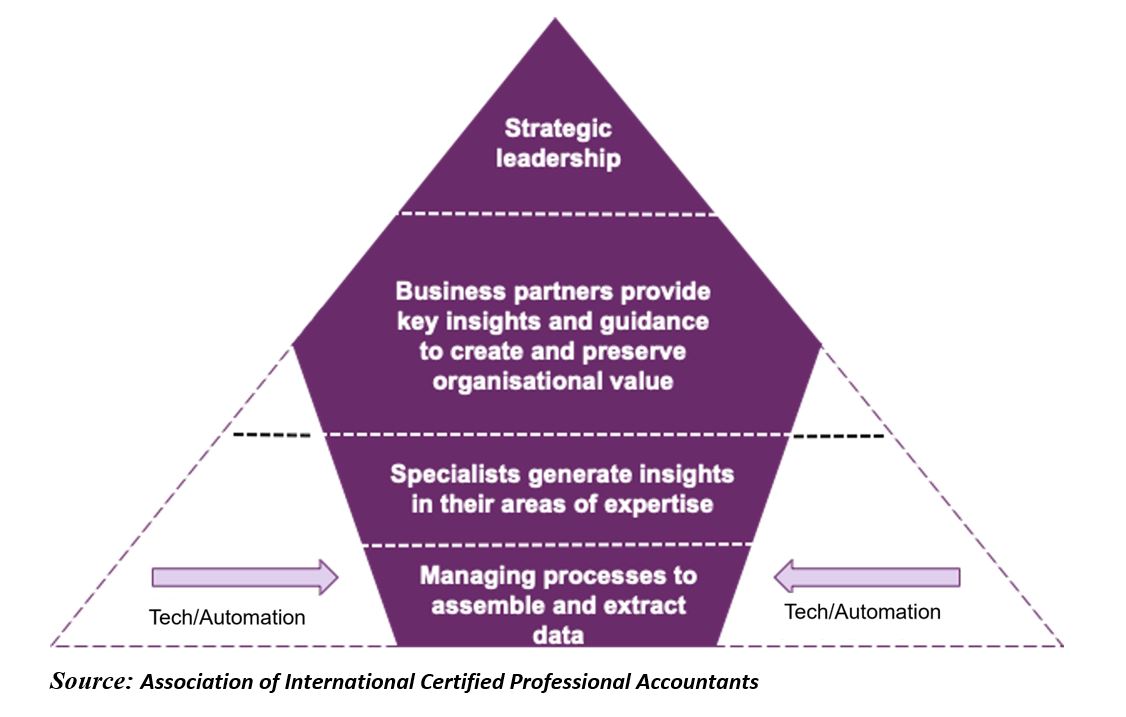How can accounting firms offer the advisory services clients want when firms are already overwhelmed? They should try revamping their organizational charts
“I would like to offer more services to clients, but I can barely keep up with my current client commitments.”
Unfortunately, this and similar sentiments are uttered by tax & accounting professionals across the country. To solve this problem, leaders are culling clients, investigating outsourcing and fractional staffing options, looking to automation technology, and hiring additional staff.
For the past two decades, staffing concerns have been on the minds of tax & accounting firm leaders, according to the PCPS Top Firm Issues surveys, and the events of the previous two years have only exacerbated talent issues.
Not only are more experienced team members retiring, but demand for services is increasing, advisory services are growing at double digits, automation is advancing, and firms are developing new, high-value services that clients indicate they want. These changes impact many practice areas; but more importantly, this should include changes to firms’ organizational chart.
Crafting a new organizational structure
Over the last several years, Barry Melancon, President and CEO of the American Institute of Certified Public Accountants (AICPA), has spoken of the shift from a triangle-shaped organizational structure to a diamond-shaped structure. The corners on the base of the traditional triangle org chart are being automated; so, in this new paradigm, more experienced talent is needed with additional skills to deliver and manage these changes.
 Looking at the staffing needs for advisory services specifically, a more diverse skillset is required to provide technical expertise, offer clients a seamless digital experience, and develop greater efficiency in delivering services — and this is especially true in the client accounting services (CAS) practice. Unfortunately, finding the right candidate with all the desired skills can be challenging.
Looking at the staffing needs for advisory services specifically, a more diverse skillset is required to provide technical expertise, offer clients a seamless digital experience, and develop greater efficiency in delivering services — and this is especially true in the client accounting services (CAS) practice. Unfortunately, finding the right candidate with all the desired skills can be challenging.
Instead of hunting for the “white unicorn” with all the desired attributes, what if instead we take a fresh look at how the team is configured? Consider how a realignment of roles and responsibilities could get talent performing where they excel most (which is often where they are most passionate). Alan Anderson, a CPA and a thought leader in the profession, wrote about applying a similar strategy to audits, proposing taking a task-based approach to assignments. In place of the traditional model of assigning a team to each audit, managers could assign tasks to individuals based on their expertise. For example, data analysts could leverage their skills across all audit clients rather than one audit at a time; in addition, they could add value to advisory services.
Identifying necessary skills
Automation reduces the number of staff members needed to perform transactional work and is becoming more accessible to accounting firms of all sizes. Automating predictable, routine tasks frees up talent to engage in higher-level work and interact with the client in more value-creating ways. However, this shift does require a greater focus on individuals’ so-called soft or power skills for success.
The World Economic Forum (WEF) identified the top 10 skills of 2025 as a part of their 2020 Future of Jobs Report. From that list, the WEF broke down the four types of skills needed:
-
-
- problem-solving
- self-management
- working with people, and
- technology use and development.
-
This list directly aligns with what firm and practice line leaders with whom I have spoken say they are looking for in their future key hires. Further, of the skills needed for the future of work, firm leaders specifically are asking for:
-
-
- communication skills (both written and oral)
- critical thinking and problem solving
- adaptability to and comfort with new technology, processes, and tasks
- technical industry expertise, and
- self-starter skills
-
In addition, accounting firms need anticipatory, proactive, and innovative team members, especially among their younger hires, who will shape the profession’s future as the Baby Boomer generation retires.
Adding roles to the org chart
Tax & accounting professionals have a unique skillset unto themselves. One way for leaders to address talent issues is to look at what tasks take their staff away from delivering billable services and what tasks they are uniquely qualified to do.
Some innovative firms are adding non-traditional roles to their service teams. They are creating customer service positions, so experienced tax & accounting professionals are not bogged down answering emails and common questions. Customer service professionals are specially trained in communication skills, problem solving, and building relationships. Some firms have even added an executive role to focus on enhancing the client experience.
In addition to innovations in hiring, client work itself could benefit from employing project management principles. On-boarding clients and staff, implementing a technology change, and rolling out new services to clients are all activities in firms that need structure. Many in the profession are well organized, but they haven’t been trained in project management.
Thus, there is often a lot of time and money wasted on initiatives that are started and never completed, mainly because there is no one to keep a project going, in and out of the industry’s busy tax season. Project managers know how to collaborate with a team, how to track and design an efficient project plan, and how to keep the project moving forward to execution.
Practice leaders are also creating teams of individuals that focus on on-boarding clients, converting data, training others to use new technology, and more. The skills needed to perform all these tasks don’t exist in all individuals. By identifying those professionals who have the skills and the interest in performing these functions, these teams can perform at a higher level.
Instead of asking, “where do I find qualified staff?”, you should identify the skills you need; and then determine if the skills of an accounting professional are necessary to perform that task. Further, explore how specific duties could be reassigned under additional staff or, perhaps how non-traditional team members could use their strengths to deliver a better client experience and drive profitability.







